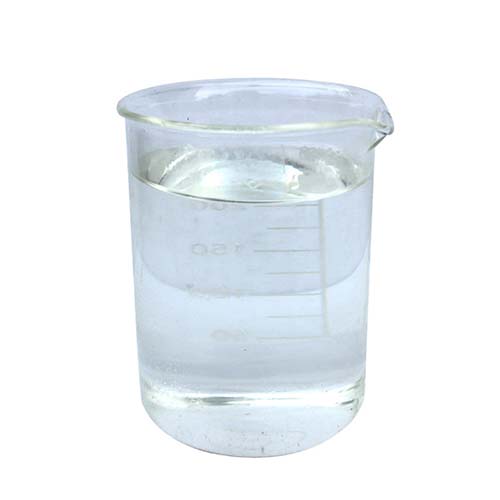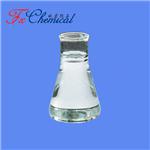The manufacture of cyclohexanol
Introduction
Cyclohexanol [108-93-0] is a colorless, viscous liquid with a camphoraceous odor. It is used chiefly as a chemical intermediate, a stabilizer, and a homogenizer for various soap detergent emulsions, and as a solvent for lacquers and varnishes. Cyclohexanol was first prepared by the treatment of 4-iodocyclohexanol with zinc dust in glacial acetic acid, and later by the catalytic hydrogenation of phenol at elevated temperatures and pressures[1].

Picture 1 Cyclohexanol liquid
Properties
Cyclohexanol is miscible in all proportions with most organic solvents, including those customarily used in lacquers. It dissolves many oils, waxes, gums, and resins.
Manufacture
This alcohol is produced commercially by the catalytic air oxidation of cyclohexane or the catalytic hydrogena[2]tion of phenol. The oxidation of cyclohexane to a mixture of cyclohexanol and cyclohexanone, known as KA-oil(ketone–alcohol, cyclohexanone–cyclohexanol crude mixture), is used for most production (1). The earlier tech[1]nology that used an oxidation catalyst such as cobalt naphthenate at 180–250◦C at low conversions (2) has been improved. Cyclohexanol can be obtained through a boric acid-catalyzed cyclohexane oxidation at 140–180◦C with up to 10% conversion (3). Unreacted cyclohexane is recycled and the product mixture is separated by vacuum distillation. The hydrogenation of phenol to a mixture of cyclohexanol and cyclohexanone is usually carried out at elevated temperatures and pressure in either the liquid (4) or in the vapor phase (5) catalyzed by nickel.
Reactions, derivatives, and uses
Cyclohexanol shows most of the typical reactions of secondary alcohols. It reacts with organic acids to form esters, and with halogen acids to form the corresponding halides. Dehydrating agents convert cyclohexanol into cyclohexene [110-83-8]. Catalytic dehydrogenation or mild oxidation of cyclohexanol yields cyclohexanone. Strong oxidizing agents such as nitric acid or alkaline potassium permanganate convert cyclohexanol into adipic acid [124-04-9], HOOC(CH2)4COOH. Oxidation of cyclohexanol to adipic acid (qv) is the most important use; fully 90% of adipic acid produced in the United States is used in the manufacture of nylon-6,6, a polymer of adipic acid and hexamethylenediamine. Adipic acid may also be used to produce the hexamethylenediamine. The next important usage of cyclohexanol, pure or admixed with cyclohexanone as KA-oil, is in the production of caprolactam (qv), which is used in the manufacture of nylon-6 polymer (see Polyamides). One principal use of cyclohexanol has been in the manufacture of esters for use as plasticizers (qv), ie, cyclohexyl and dicyclohexyl phthalates.
In the finishes industry, cyclohexanol is used as a solvent for lacquers, shellacs, and varnishes. Its low volatility helps to improve secondary flow and to prevent blushing. It also improves the miscibility of cellulose nitrate and resin solutions and helps maintain homogeneity during drying of lacquers. Reaction of cyclohexanol with ammonia produces cyclohexylamine [108-91-8], a corrosion inhibitor.
Cyclohexanol is used as a stabilizer and homogenizer for soaps and synthetic detergent emulsions. It is used also by the textile industry as a dye solvent and kier-boiling assistant (see Dye carriers). Commercial methylcyclohexanol, CH3C6H10OH, is a slightly viscous, straw-colored liquid which is a mixture of isomers listed in Table 2. The commercial product, made by the catalytic hydrogenation of mixed cresols, has a boiling range of 155–180◦C, d15.5 15.5 , 0.924 ± 0.003 g/mL, and n20 D , 1.461. It is used as a solvent in lacquers, as an ingredient in soap-based spot removers, as a blending agent for special textile soaps and detergents, and in the manufacture of lubricating-oil additives.
Determination
Cyclohexanol purity is best determined by gas–liquid chromatography using a DC-710 or carbowax 20M on-chromosorb column. Impurities such as cyclohexane, benzene, cyclohexanone, and phenol do not interfere. Other analytical procedures include acylation with acetyl chloride and pyridine at elevated temperatures. Following hydrolysis, the excess acid is titrated with sodium hydroxide solution [3]. Aldehydes and easily hydrolyzed esters interfere with this method. For samples containing high concentrations of acids and easily hydrolyzed esters but no aldehydes or ketones, an alternative procedure is used [4]. This procedure involves treatment at elevated temperatures of the sample containing cyclohexanol with acetic acid containing boron trifluoride catalyst. The water formed in the esterification reaction is then determined by the Karl Fischer method. For analyses based on micro procedures, acetic anhydride is the preferred acetylating agent [5].
Cyclohexanol can be determined colorimetrically by reaction with p-hydroxy-benzaldehyde in sulfuric acid [6]. This method can be used in the presence of cyclohexanone and cyclohexane. Cyclohexanol and cyclohexanone both show a maximum absorbency at 535 nm but at 625 nm the absorption by cyclohexanone is negligible, whereas cyclohexanol shows appreciable absorption.
Reference
1 Chemical Economics Handbook, SRI International, Menlo Park, Calif., Sept. 1990 Allied Signal Co., internal data,1992.
2 H. C. Reis and R. G. Muller, Caprolactam, Part II, Report No. 7, Process Economics Program, SRI International, Menlo Park, Calif., 1965, 441–442.
3 D. M. Smith and W. M. D. Bryant, J. Am. Chem. Soc. 57, 61 (1935).
4 W. M. D. Bryant, J. Mitchell, Jr., and D. M. Smith, J. Am. Chem. Soc. 62, 1 (1940).
5 N. D. Cheronis and T. S. Ma, Organic Functional Group Analysis by Micro and Semi-micro Methods, Interscience Publishers, Inc., New York, 1964, 493–496.
Related articles And Qustion
See also
Lastest Price from Cyclohexanol manufacturers

US $2.80/kg2025-07-10
- CAS:
- 108-93-0
- Min. Order:
- 1000kg
- Purity:
- ≥99.5% (Pharmaceutical Grade) / ≥99.0% (Industrial Grade)
- Supply Ability:
- 100 tons

US $0.00/KG2025-04-21
- CAS:
- 108-93-0
- Min. Order:
- 185KG
- Purity:
- 98%min
- Supply Ability:
- 30tons/month



